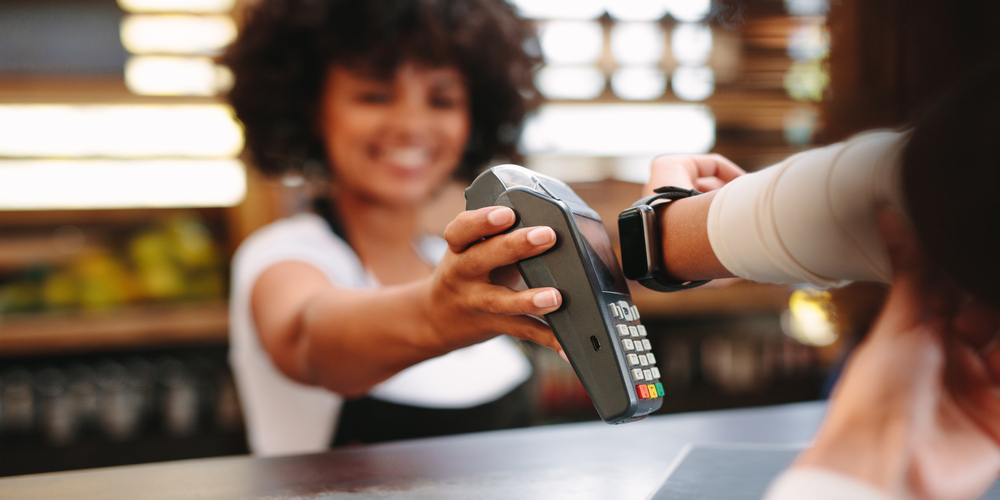This article was featured on Global Banking And Finance Review and presents the opportunities that banks can embrace to gain numerous benefits from the digital payments in the new reality, where people and the coronavirus will coexist. We have been granted rights to promote the feature by the publisher.
COVID-19 news continues to dominate the headlines, and realistically this will be the case for months to come.
Officials with the World Health Organization (WHO) state that it has a perceived risk of transmitting disease, and cash isn’t more or less likely to spread the disease. They also pointed out, the cash can carry the virus just like door handles and hand railings, and can spread it on contact, providing sensible recommendations to citizens how to protect themselves.
However, the pandemic situation is pushing more people and businesses to turn to other payment methods when they may not have done previously, and consider the cashless options to prevent the transmitting of the coronavirus.
Banks, like all organizations, are assessing what measures they can take to support their customers and our wider society, to help them through this challenging period. For all of them, “Going Cashless” is an opportunity as the ATMs are expensive to maintain, and it is more cost-effective to encourage customers to use digital payments. Now is the time for banks to improve their capability in this area and to enforce their technology departments to embrace innovations and undertake new projects for the overall digital transformation of their payment services.
While banks have a clear role to play in helping consumers and businesses survive financially, they also have a significant role to play in reducing the spread of COVID-19. The electronic payment technologies offered by banks and other providers can help to reduce the spread of this virus by reducing the need for human contact and the need to touch contaminated surfaces by hand.
Merchants have already begun to encourage consumers to use cashless payments, and The Federal Reserve of the United States is reported to have increased the holding time for banknotes that have traveled from Europe or Asia to a minimum of 10 days.
Is cash no longer king?
As the citizens of many countries go into reduced social contact and isolation, cash payments become increasingly difficult and may involve higher health risks. For example, let’s imagine that Ben needs to pay for emergency repairs to his house. In a cash-based scenario, Ben has to leave his home to either enter a bank where he could come into contact with people or use a cash machine that has been used by others before he touches it. He then receives cash, which may be harboring the virus, and he must travel home with the money. This presents a safety risk as well as a viral infection risk if he comes into contact with other people during his journey.
Now let’s imagine that Ben decides to use card payment or another electronic payment method to settle his invoice without leaving the safety of his home. Depending on which electronic payment he uses, Ben may also receive additional protection for his payment in this scenario.
As more countries go into stricter social distancing and isolation measures, cash will become an increasingly inconvenient means of payment. Individuals are also likely to become more concerned with the hygiene of banknotes. Both of these considerations will encourage the adoption of more innovative electronic payment methods.
Person-to-person electronic payments are lagging behind payments to businesses
Electronic payments can be categorized into two main areas; customer to merchant payments and person-to-person (P2P) payments. The first category is fairly well embedded in our society as we have been making payments to businesses through card payments for some time.
When it comes to making payments to other individuals, such as friends, family, or other individuals, there is still vast scope to offer more innovative methods of payments, while also educating consumers on how to use the methods and driving greater adoption over time.
Today P2P payments come in a variety of forms from transfers through the internet or mobile banking to digital wallets.
The security of electronic payments has been a block to some consumers trusting them. However, with the dawn of biometrics security measures such as facial scans, voice recognition, and iris recognition, banks are staying a step ahead of fraudsters, and younger generations are increasingly using these options.
Digital wallets are replacing physical wallets
A digital wallet can store a consumer’s payment details all in one location, making it easier to perform cashless transactions online and in stores. These wallets can contain details from payment mechanisms like Apple Pay and Google Pay, as well as enabling the individual to connect their credit and debit card details as well as some store loyalty cards. A digital wallet can be found on desktops, laptops, and mobile devices, whereas a mobile wallet is only available on a smartphone.
Unlike a physical wallet that can be stolen, a digital wallet uses authentication methods such as Face ID or Touch ID to activate it, and the wallet encrypts all personal data for added security.
Digital wallets come in different forms, from digital gift cards that can only be used in one store such as Starbucks, to wallets that can be widely used across various merchants such as those associated with Google, Apple, and Samsung.
In regard to P2P payments, it is hard to define digital wallets that are covering the full payment ecosystem. The available card-centric wallet enables consumers to load money into a spending account from which transfers are possible only between the users registered for the wallet. Revolut, Curve, and Monzo are examples of such “closed-loop” wallets that allow internal P2P payments. The perfect application of P2P payments should be more open and to enable instant person-to-person payments beyond the tech restrictions available at the moment.
The technology behind digital wallets is developing at pace and providing customers with more and faster options.
Some digital wallets now allow you to transfer money between cards in as little as 30 minutes. Digital wallets that are aligned with opening banking P2P facilitate transfers between IBANs, and when combined with instant payments, they offer a faster transfer than other services.
COVID-19 could accelerate the rise of digital payments
The perception of cash being ‘unclean’ and the challenges with using cash machines and bank branches as society takes steps to reduce the spread of COVID-19, may change the payments landscape permanently.
Banks now have a tremendous opportunity and responsibility to support customers to reduce their risk of coming into contact with the virus or transmitting it through encouraging the use of electronic communication channels for contacting the bank rather than entering bank branches and for making secure payments.
Now is the time for banks to put more resources into educating their customers on how to use electronic payment options safely and to continue to innovate electronic payments so that they fit seamlessly into their customers’ online activities and their new daily lives.
Ready for FinTech innovations? Talk to experts


